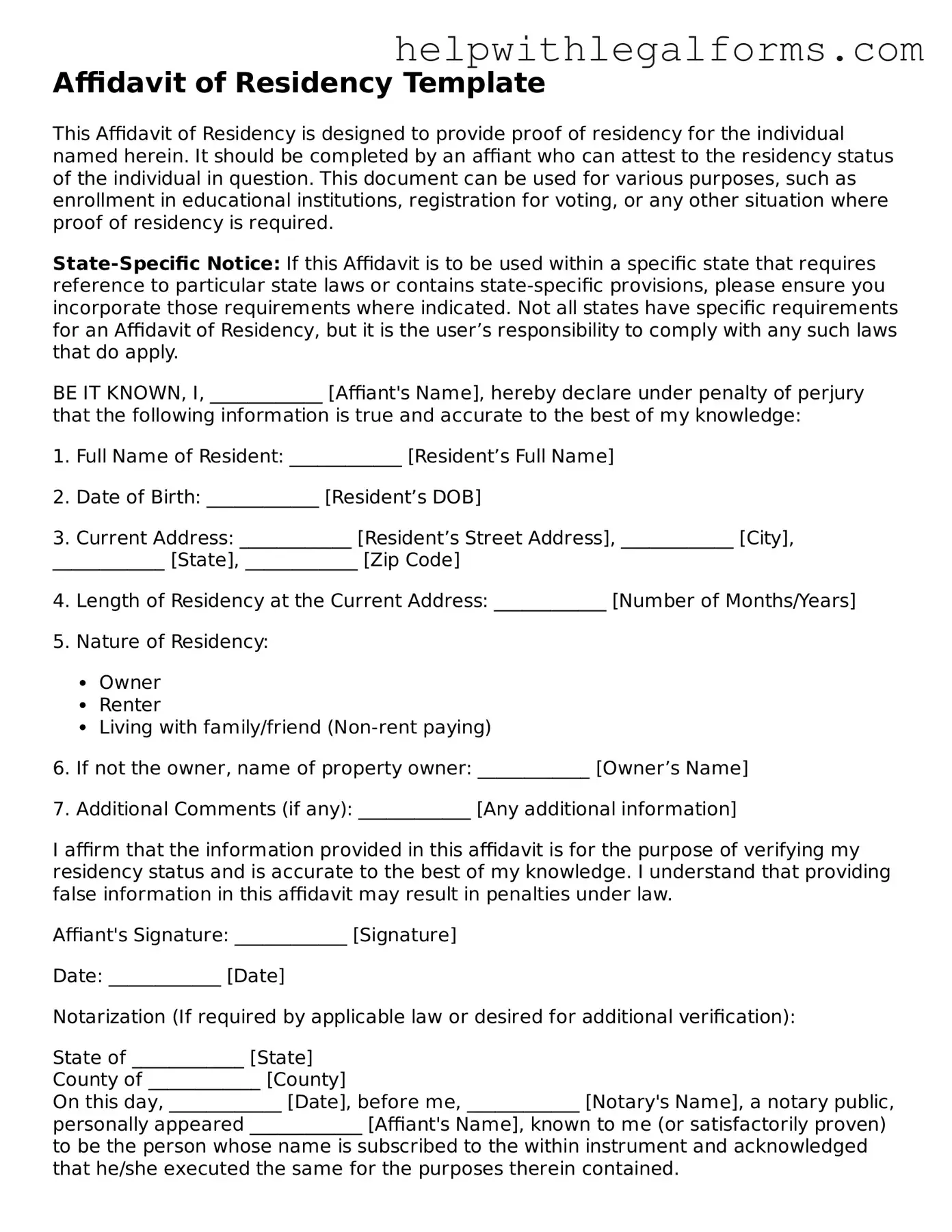Affidavit of Residency Template
This Affidavit of Residency is designed to provide proof of residency for the individual named herein. It should be completed by an affiant who can attest to the residency status of the individual in question. This document can be used for various purposes, such as enrollment in educational institutions, registration for voting, or any other situation where proof of residency is required.
State-Specific Notice: If this Affidavit is to be used within a specific state that requires reference to particular state laws or contains state-specific provisions, please ensure you incorporate those requirements where indicated. Not all states have specific requirements for an Affidavit of Residency, but it is the user’s responsibility to comply with any such laws that do apply.
BE IT KNOWN, I, ____________ [Affiant's Name], hereby declare under penalty of perjury that the following information is true and accurate to the best of my knowledge:
1. Full Name of Resident: ____________ [Resident’s Full Name]
2. Date of Birth: ____________ [Resident’s DOB]
3. Current Address: ____________ [Resident’s Street Address], ____________ [City], ____________ [State], ____________ [Zip Code]
4. Length of Residency at the Current Address: ____________ [Number of Months/Years]
5. Nature of Residency:
- Owner
- Renter
- Living with family/friend (Non-rent paying)
6. If not the owner, name of property owner: ____________ [Owner’s Name]
7. Additional Comments (if any): ____________ [Any additional information]
I affirm that the information provided in this affidavit is for the purpose of verifying my residency status and is accurate to the best of my knowledge. I understand that providing false information in this affidavit may result in penalties under law.
Affiant's Signature: ____________ [Signature]
Date: ____________ [Date]
Notarization (If required by applicable law or desired for additional verification):
State of ____________ [State]
County of ____________ [County]
On this day, ____________ [Date], before me, ____________ [Notary's Name], a notary public, personally appeared ____________ [Affiant's Name], known to me (or satisfactorily proven) to be the person whose name is subscribed to the within instrument and acknowledged that he/she executed the same for the purposes therein contained.
In witness whereof, I hereunto set my hand and official seal.
Notary's Signature: ____________ [Signature]
Seal: ____________ [Attach Seal]
